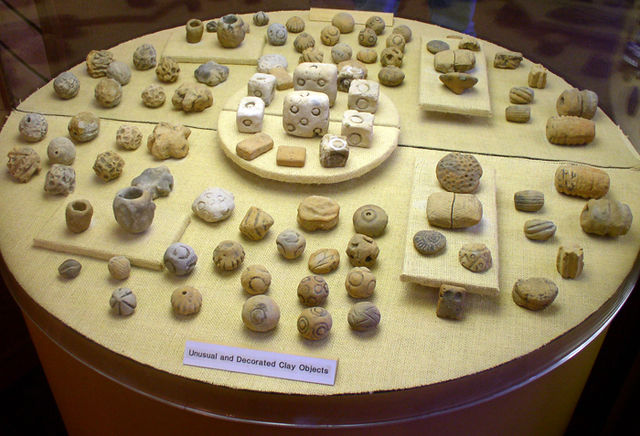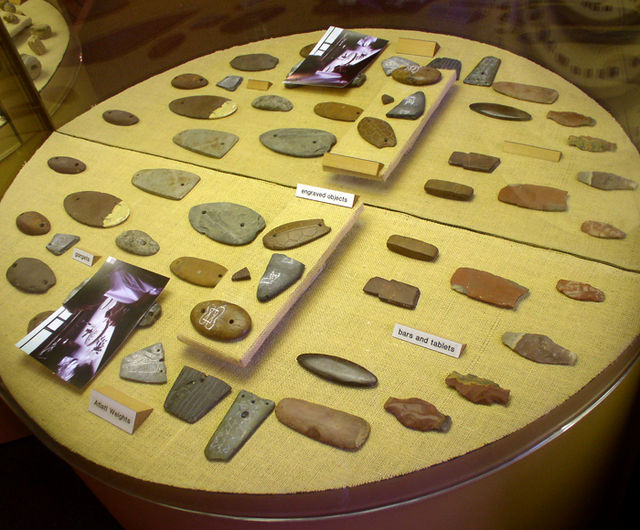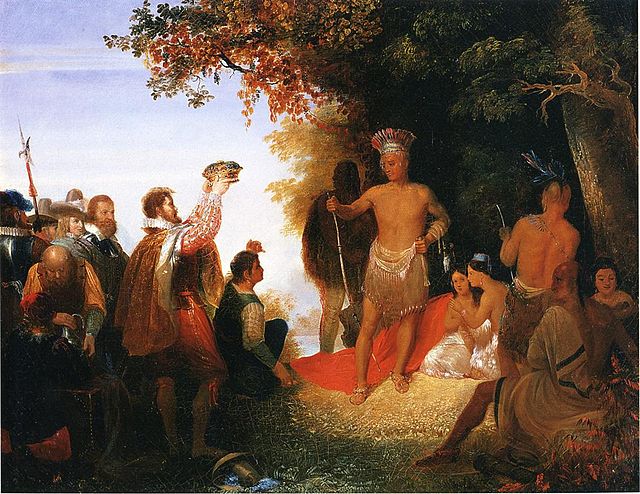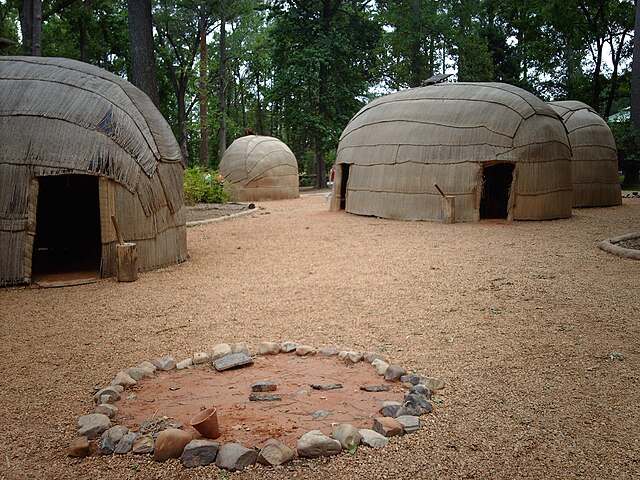Indigenous peoples of the Southeastern Woodlands
Indigenous peoples of the Southeastern Woodlands, Southeastern cultures, or Southeast Indians are an ethnographic classification for Native Americans who have traditionally inhabited the area now part of the Southeastern United States and the northeastern border of Mexico, that share common cultural traits. This classification is a part of the Eastern Woodlands. The concept of a southeastern cultural region was developed by anthropologists, beginning with Otis Mason and Franz Boas in 1887. The boundaries of the region are defined more by shared cultural traits than by geographic distinctions. Because the cultures gradually instead of abruptly shift into Plains, Prairie, or Northeastern Woodlands cultures, scholars do not always agree on the exact limits of the Southeastern Woodland culture region. Shawnee, Powhatan, Waco, Tawakoni, Tonkawa, Karankawa, Quapaw, and Mosopelea are usually seen as marginally southeastern and their traditional lands represent the borders of the cultural region.

Painting of a Choctaw woman by George Catlin
"Poverty point objects," earthenware, believed to be for cooking, Poverty Point
Clay female figurines, Poverty Point
Carved shell gorgets and atlatl weights, Poverty Point
The Powhatan people (;) are Native Americans who belong to member tribes of the Powhatan Confederacy, or Tsenacommacah. They are Algonquian peoples whose historic territories were in eastern Virginia.
'John Smith taking the King of Pamunkey prisoner', a fanciful image of Opechancanough from Smith's General History of Virginia (1624). The image of Opechancanough is based on a 1585 painting of another Native warrior by John White[1]
The Coronation of Powhatan, oil on canvas, John Gadsby Chapman, 1835
Reconstructed Powhatan village at the Jamestown Settlement living-history museum.







